Wisconsin has 150 species of butterflies. Here's how you can see more of them.
People love butterflies. Welcomed by gardeners and just about anyone who spends time outdoors, butterflies are the endearing visitors that flutter along our landscapes from spring thaw to fall frost in Wisconsin.
A sign of renewal, butterflies are a fragile glimpse of life eagerly awaited after an exceptionally snowy winter.
Recently, butterfly gardening has predominantly focused on the iconic orange monarch, which was once commonplace but declared federally endangered in 2022 after years of decline. Still, while monarchs have become the poster butterfly for conservation, what about the other 150 or so butterfly species found in the Dairy State?
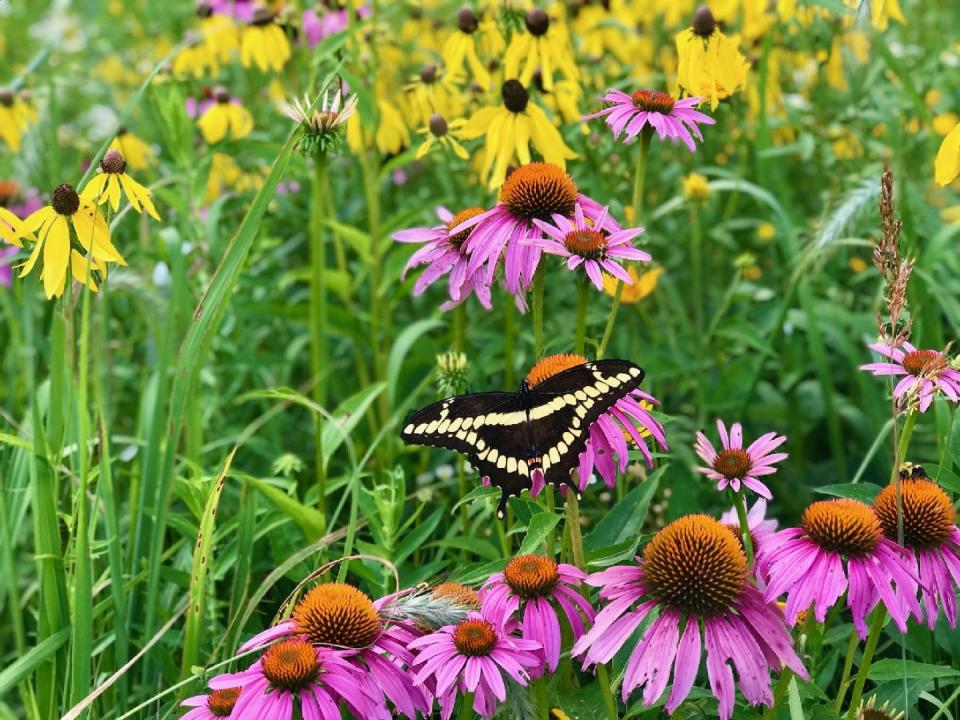
Swallowtails, skippers, painted ladies, common buckeyes and admirals could all use our help.
To understand more about these other butterflies, two Wisconsin butterfly experts have offered their best advice for helping and attracting them to your yard.
Incidentally, helping the other butterflies by gardening a little on the wild side using native plants also helps monarchs, birds, bees and our collective ecosystem. It’s part of a trend toward transforming our outdoors back to being friendly and functional for wildlife.
And while butterflies and their caterpillars are beneficial to the environment, they also bring beauty, an added plus for people.
More: Top plants for Wisconsin butterflies
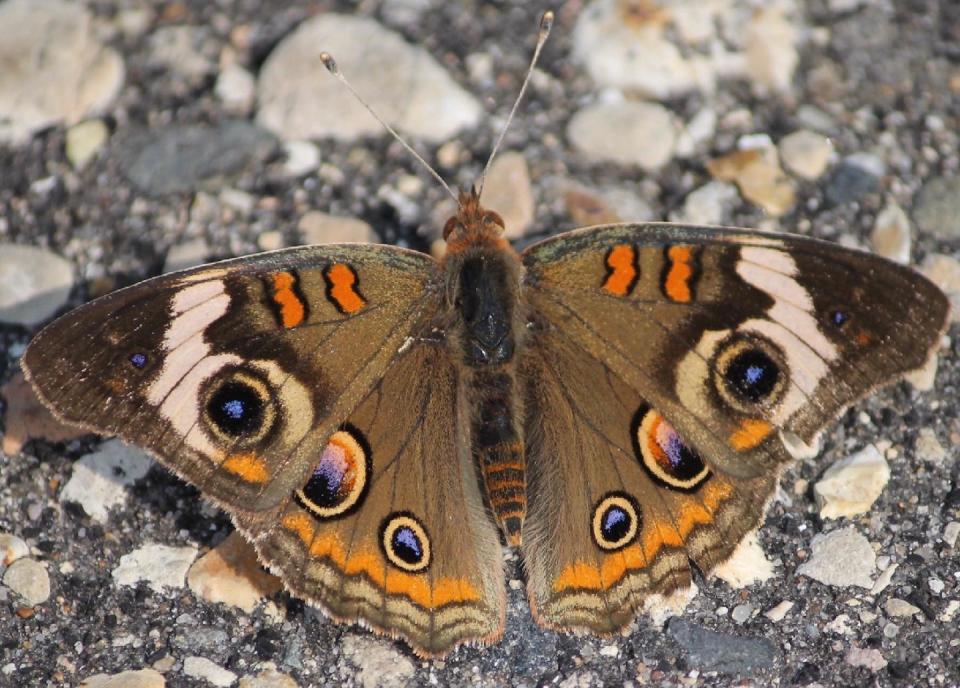
Butterflies like to soak up sun on rocks
For experienced butterfly gardener Jennifer Lazewski of Wauwatosa, butterflies bring a “tremendous, delightful surprise. It makes you feel good about your yard. It brings in these beautiful things from nature,” she said of seeing butterflies in her modest lot packed with native plants. Butterflies, she said, “can give you a highlight in your day just looking at them for a few minutes.”
Lazewski, a former attorney and current executive director of the Wisconsin Society of Ornithology, is also an officer with the Southwest/Wehr chapter of Wild Ones, a master gardener and master naturalist who gives outreach presentations on butterfly gardening. “I’ve been a butterfly gardener longer than I’ve been a master gardener,” she said.
For Lazewski, the goal is to attract butterflies throughout their life cycles for maximum butterfly interaction all season. In spring, the best thing to do is to “plant food sources for butterflies for later in the season,” she said.
In Wisconsin’s climate, butterflies vary in their survival strategies come winter, depending on the species. They can migrate long or short distances, or can overwinter as eggs on host plants, or as caterpillars, chrysalises, or adults in tree bark crevices, leaves or woodpiles.
Come spring, one of the first to appear as an adult butterfly is the American lady, Lazewski said. Temperatures in both northern and southern states will affect how soon butterflies appear, she said. Some swallowtails appear as early as March in southeast Wisconsin, report or check sightings online at wisconsinbutterflies.org.
Early on, food and water are not as important as surfaces to warm butterflies; they especially like rocks that soak up sunshine and radiate heat, she said. Butterflies need to warm their bodies before they can fly.
“Having surfaces for them to warm is one of the best things you can have in your yard,” she said. Plus, it gives an opportunity to see them “basking,” an official butterfly watching term.
Another spring-related tip is to exercise patience with yard cleanup, something gardeners may find difficult.“In spring, wait until at least five days of over 50 degrees in a row,” she said, before removing last year’s plant debris. “Don’t cart away your leaves that have overwintered. If you’re taking the leaves away, you’re taking away the next generation of butterflies.”
Piling plant debris, as long as it’s not diseased, in a compost pile is a best gardening practice to save as many butterflies as possible in different life stages. Or, cut last year’s stems in spring and let them lie in the landscape. “Native plant litter will disintegrate. They can be used as a type of mulch,” Lazewski said.
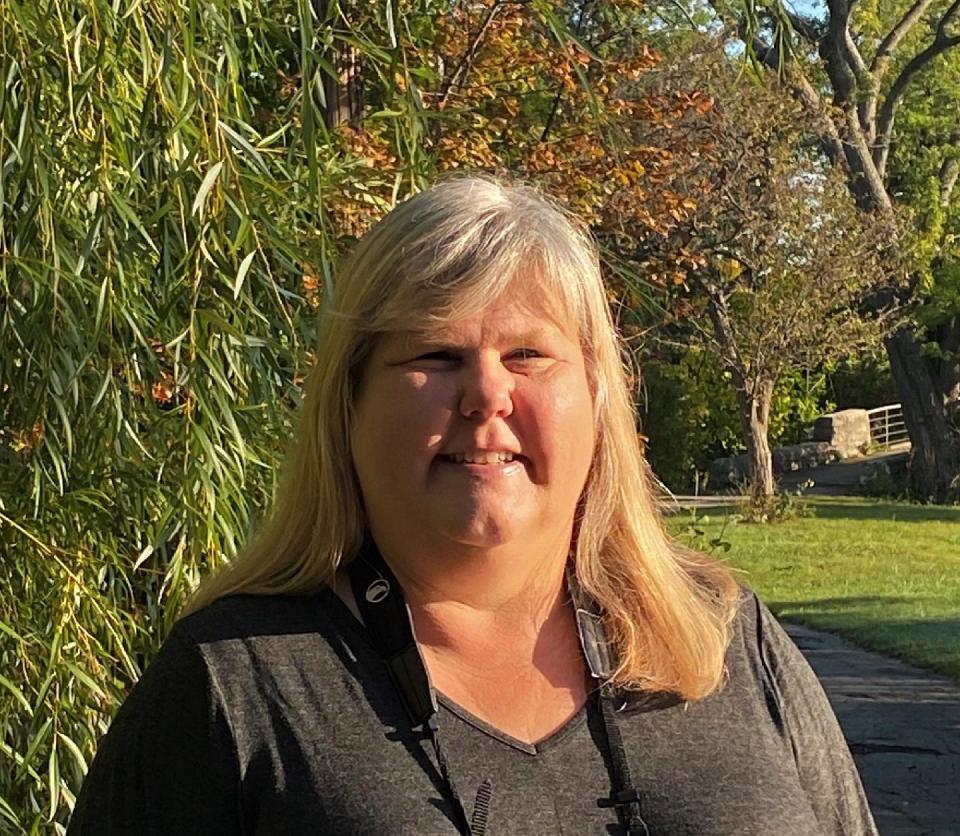
Host plants are a key to attracting butterflies
What’s planted in your yard will affect the number and variety of butterfly visits. So-called host plants provide a home for butterflies to lay eggs and will in turn supply the right food for caterpillars.
Host plants boost the odds of attracting adult butterflies as they become a hangout for reproduction, according to Lazewski.
“Females lay eggs, males patrol to wait for females” around the plants, she said. “Host plants are very important. You’re helping to build an ecosystem.”
Trees and shrubs provide shelter for adult butterflies, allowing them to roost overnight and safely escape predators, heat, wind and rain.
Caterpillars are also key to attracting other wildlife to yards. “Caterpillars are a major food source for baby birds,” Lazewski explained. “Huge amounts are needed. Caterpillars are the perfect protein source with soft cover.”
Some of the butterflies that visit Lazewski’s yard include black swallowtail, Eastern tiger swallowtail, American lady, painted lady, skippers and common buckeye.
“Common buckeyes are very rare, so I was very excited to see one,” she said.
Some of the native plants she grows to attract butterflies include purple coneflower, ironweed, Joe Pye weed, stiff goldenrod, obedient plant and blue lobelia.
“The more plants you have blooming across the whole summer, the more butterflies you will see,” she said. “Provide food throughout the season, that will keep them coming back.”
As for pesticide use, Lazewski said butterflies are insects, and “mosquito spraying will kill all the insects.” She also said tiger swallowtails in particular are being harmed by ash tree treatments for the emerald ash borer.
Another tip of Lazewski’s is to plant flowers in large blocks of the same color or variety, since butterflies are near-sighted. Plant them in sunny areas because butterflies like sun.
“The point is so the butterfly can see it,” she said. “You’re trying to grab their attention as they are flying through the air.”
In her experience, big swaths of purple, yellow, white and pink flowers best pull in the butterflies.
“Swallowtails, both black and Eastern tiger but mostly black, seem to be very attracted to hot pink flowers. I specifically have some annuals for black swallowtails every year,” Lazewski said.
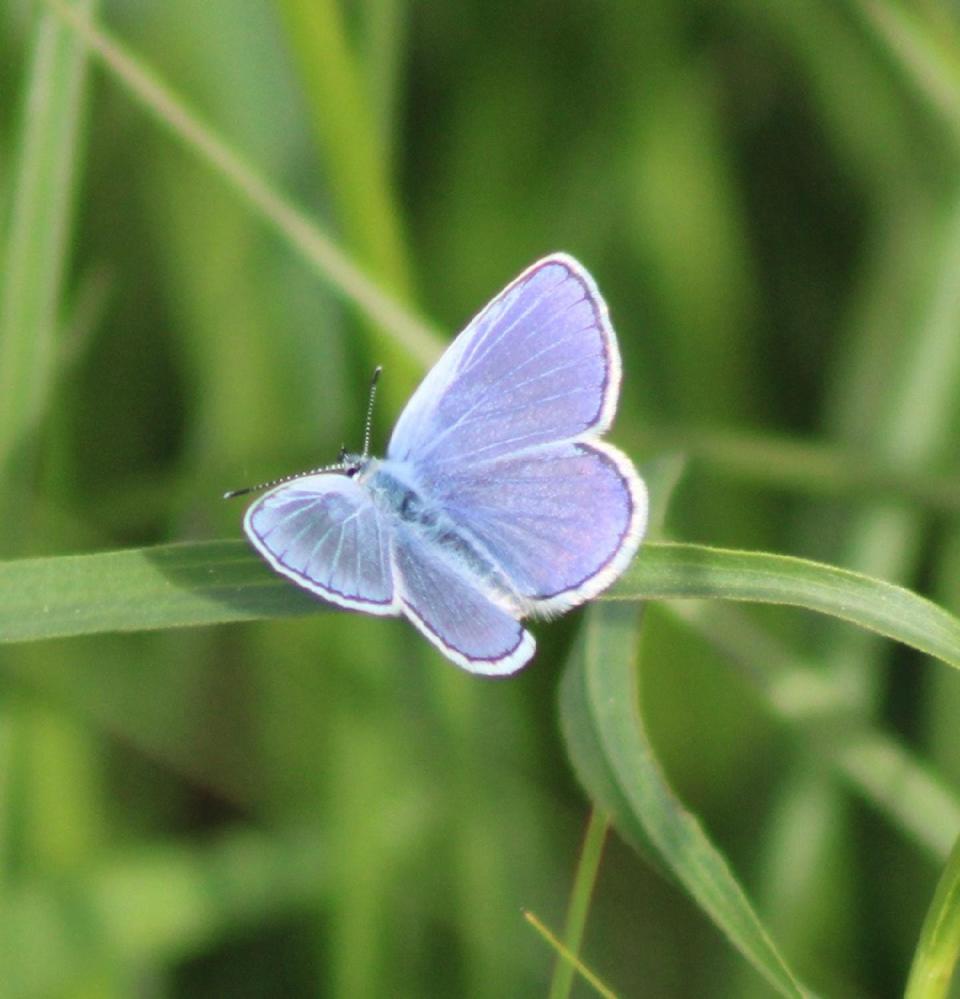
Wisconsin is No. 1 spot for endangered Karner blue butterflies
As far as numbers go, butterflies can fluctuate with good and bad years, Lazewski said. Still, she’s noticed they are not as abundant as they were 20 or even 10 years ago.
Typically, about 150 butterfly species will show up in Wisconsin each season, according to Jay Watson, conservation biologist specializing in insects for the Wisconsin DNR. He said the state has about 130 butterfly breeding species but “strays from the South can appear and will make it up to 156 species.”
He agreed that butterflies can have up or down years depending on conditions and how successful broods are.
“Painted ladies, they are usually present in Wisconsin in small numbers each summer, but some years they are everywhere,” he said.
In North America, more than 17% of butterflies are at risk, some that — like the monarch — were once common and widespread he said.
Notably, Wisconsin is home to the world’s largest population of the federally endangered Karner blue butterfly, Watson said.
Native wild lupine Lupinus perennis is the sole host plant for Karner blues, a small blue butterfly about the size of a nickel. Karner blues can be found in the central and northwestern areas of the state but once lived in much of the Great Lakes region and eastern U.S.
Watson said a nonnative lupine, the striking bigleaf lupine Lupinus polyphyllus, is proliferating up north in the Bayfield area, and the Karner blue caterpillars will not eat it.
Exacerbating the problem is the bigleaf lupine will hybridize with the wild lupine and outcompete the pure native wild lupine. The hybrids then attract the Karner blue eggs with disastrous results, Watson explained.
“Karner eggs will die. That’s a concern, I see it spreading more and more,” he said of the nonnative lupine.
In general, Watson said butterflies, which differ from moths in that they are active during the day, are comparatively effective pollinators. Some plants rely on particular butterflies as pollinator “specialists” for reproduction.Overall, butterflies are beneficial, not just for pollinating plants but for feeding other species up the food chain, Watson said.
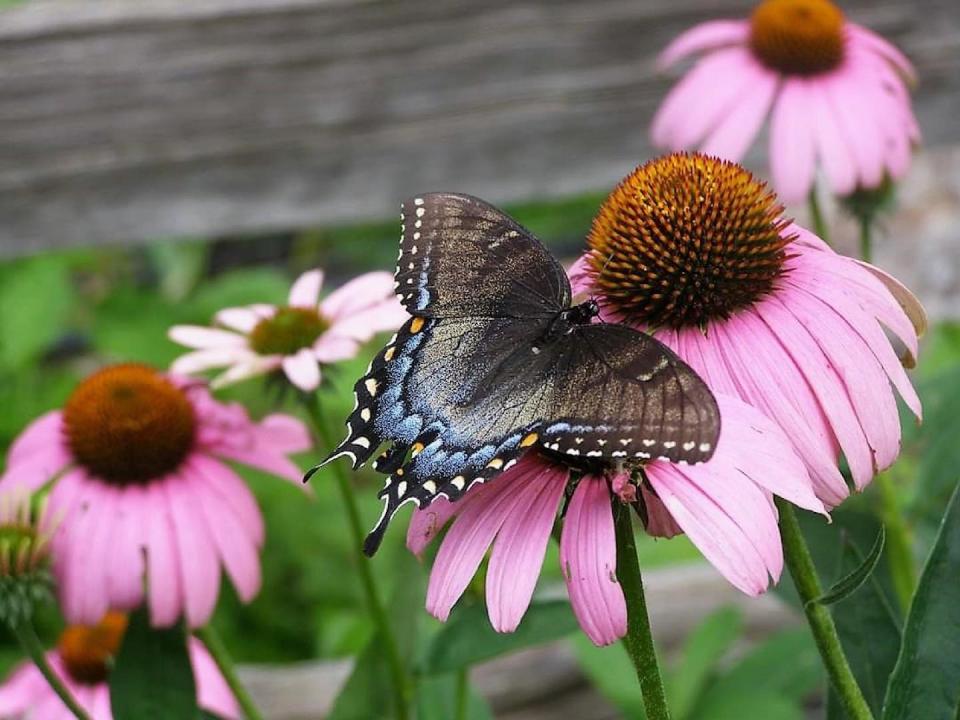
Some butterflies like landing on you
Sometimes butterflies can be seen “puddling” in a group (large numbers of butterflies are called flocks, kaleidoscopes, or flutters) where they congregate over moist sandy or gravel areas to consume nutrients from wet soil.
Some species will get up close and personal with people. “Males, they will come and land on you to get the salt,” he said. Karner blues, coppers and hackberry emperors are known to land on skin and linger, or “come back again and again to you.”
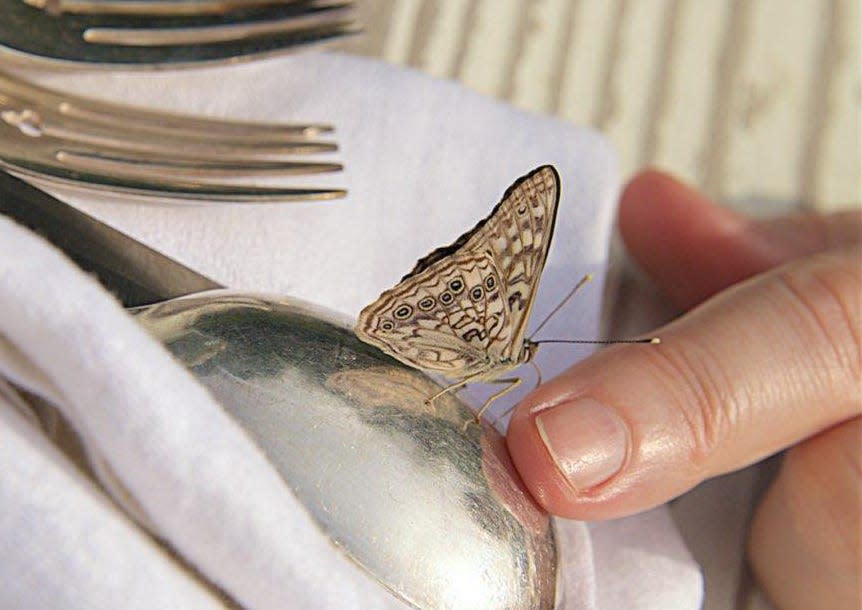
Generally, most butterfly species in Wisconsin are native, but a few nonnative butterflies persist. The cabbage white butterfly was brought in during the 1860s, Watson said. “They can be invasive since they cause problems to agriculture crops like cabbage and broccoli.”
A showy native butterfly many are familiar with is the swallowtail. Wisconsin is home to seven types: black, Canadian tiger, Eastern tiger, giant; and strays from the South that are uncommon but appear in Wisconsin: pipevine, spicebush and zebra.
As for specific plant recommendation for Wisconsin yards, a good spring bloomer for butterflies is violets, Watson said.
“Fritillaries use violets. That’s a great one not only for them to nectar on them, but their caterpillars feed on them,” he said. Other good plants include Jacob’s ladder, wild strawberry, wild geranium, chokecherry, prairie phlox, golden Alexander, New Jersey tea, cherry trees, dogwoods, blueberry, elderberry, willow and hackberry trees.
Watson recommended property owners let a portion of the lawn go natural by converting to no-mow areas with native plants. “As long as you have a good native component and diversity. That’s what is going to help the most. Trees, shrubs, flowers, ground level — kind of having that good mix,” he said.
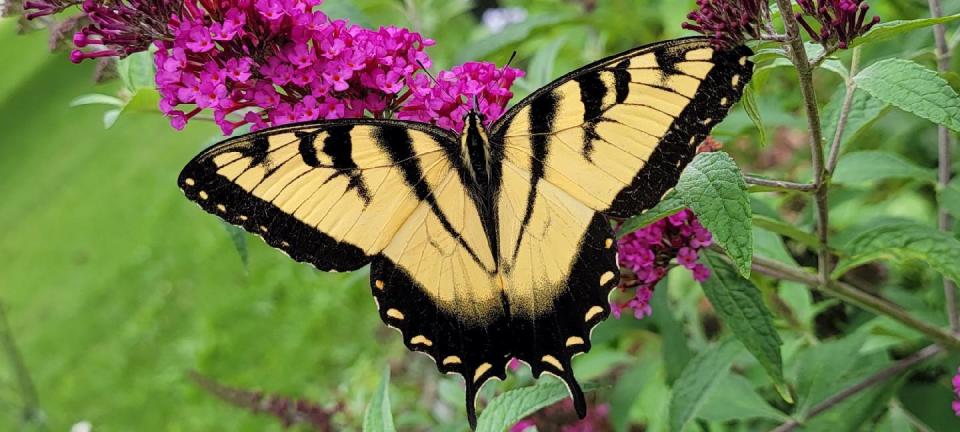
Easy ways to create a butterfly garden
To remove the guesswork in establishing a butterfly garden, native plant nurseries, garden centers and nonprofit organization sales will feature pollinator or even butterfly specific plant choices.
Pre-planned native butterfly gardens are available online from Wisconsin-based Prairie Nursery starting at $169 for a 32-plant garden. Ironweed, bergamot, prairie blazingstar, tall Joe Pye weed, Ohio goldenrod and columbine are some of the flowers featured. Prairie Nursery also has a new link on its homepage for butterfly host plants that include lavender hyssop, sky blue aster, white false indigo, sideoats grama, lanceleaf coreopsis and pagoda dogwood (also called alternative leaf), a shrubby tree with a beautiful horizontal form ideal for landscaping.
Stein’s Garden and Home, with retail locations in eastern Wisconsin, will feature “pollinator friendly native plants” in a designated native plant area. The plants are likely to be available by the end of April, weather dependent, according to marketing manager Susan Cieslak. Stein’s will also carry the “Bring Back the Butterfly” brand that should hit shelves in June or July. Stein’s “Caterpillar Candy” collection of plants is planned for the end of July.
Jennifer Rude Klett is a Wisconsin freelance writer of Midwestern life and author of “Home Cooking Comfort,” contact her at jrudeklett.com. Follow her on Facebook at Jennifer Rude Klett: Nonfiction Writer.
This article originally appeared on Milwaukee Journal Sentinel: How to help Wisconsin's 150 species of butterflies

